The Use of EU Territorial Cooperation Funds for the Sustainable Development of National and Ethnic Minorities in the Baltic Sea Region
Abstract
:1. Introduction
2. The Key Determinants of the Identification and Sustainable Development of Ethnic and National Minorities
- Occurring in one country (e.g., Sorbs in Germany);
- Occurring in several countries (e.g., the Sami people in Scandinavia);
- Occurring in many countries (e.g., Roma all over the world).
- Monitoring the condition of minorities, including race, ethnicity and migratory status;
- Implementing anti-discrimination measures;
- Social, economic and political inclusion;
- Better access to education;
- Support for agricultural activities “through secure and equal access to land, other productive resources and inputs, knowledge, financial services, markets and opportunities for value addition and non-farm employment”.
- Subnational (e.g., city, administrative region);
- National (state);
- Transnational (e.g., Euroregion, European Union).
3. The Genesis and Historical Development of Nations and States of the Baltic Sea Region
4. Ethno-National Minorities in the BSR
5. Quantitative Analysis of the Impact of Territorial Cooperation on the Development of National and Ethnic Minorities
6. Qualitative Analysis of the Impact of Territorial Cooperation on the Development of National and Ethnic Minorities
6.1. Kashubians
6.2. Silesians
6.3. Roma
6.4. Lemko
6.5. Tatars
6.6. Livonians
6.7. Seto and Suiti
6.8. Sami
6.9. Karelians
6.10. Tornedalians
6.11. Faroes
6.12. Jews
7. Conclusions
Author Contributions
Funding
Institutional Review Board Statement
Informed Consent Statement
Data Availability Statement
Conflicts of Interest
References
- Martínez Hernández, L.; Iglesias Márquez, D.; Felipe Pérez, B. Rethinking Sustainable Development in Terms of Justice: Issues of Theory, Law and Governance; Cambridge Scholars Publishing: Newcastle upon Tyne, UK, 2019. [Google Scholar]
- Blokker, N.M.; Dam-de Jong, D.; Prislan, V. Furthering the Frontiers of International Law: Sovereignty, Human Rights, Sustainable Development: Liber Amicorum Nico Schrijver; Brill: Leiden, The Netherlands, 2021. [Google Scholar]
- Potthast, P.; Meisch, S. Climate Change and Sustainable Development: Ethical Perspectives on Land Use and Food Production; Wageningen Academic Publishers: Wageningen, The Netherlands, 2012. [Google Scholar]
- Puthucherril, T.G. Towards Sustainable Coastal Development: Institutionalizing Integrated Coastal Zone Management and Coastal Climate Change Adaptation in South Asia; Martinus Nijhoff Publishers: Leida, The Netherlands, 2014. [Google Scholar]
- Shoraka, K. Human Rights and Minority Rights in the European Union; Routledge: Abingdon, UK, 2010. [Google Scholar]
- Lele, S.M. Sustainable Development: A critical review. World Dev. 1991, 19, 607–621. [Google Scholar] [CrossRef]
- Meadowcroft, J.; Banister, D.; Holden, E.; Langhelle, O.; Linnerud, K.; Gilpin, G. What Next for Sustainable Development?: Our Common Future at Thirty; Edward Elgar Publishing: Cheltenham, UK; Northampton, MA, USA, 2019. [Google Scholar]
- Barbosa, G.S.; Drach, P.G.; Corbella, O.D. A Conceptual Review of the Terms Sustainable Development and Sustainability. Int. J. Soc. Sci. 2014, 3, 1. [Google Scholar]
- Mensah, J. Sustainable development: Meaning, history, principles, pillars, and implications for human action: Literature review. Cogent Soc. Sci. 2019, 5, 1. [Google Scholar] [CrossRef]
- Ukaga, O.; Maser, C.; Reichenbach, M. Sustainable development: Principles, frameworks, and case studies. Int. J. Sustain. High. Educ. 2011, 12. [Google Scholar] [CrossRef]
- Colombo, U. The Club of Rome and sustainable development. Futures 2001, 33, 7–11. [Google Scholar] [CrossRef]
- United Nations. Report of The United Nations Conference On The Human Environment. In Proceedings of the of The United Nations Conference on the Human Environment, Stockholm, Sweden, 5–6 June 1972; United Nations: New York, NY, USA, 1973. [Google Scholar]
- Mebratu, D. Sustainability and sustainable development: Historical and conceptual review. Environ. Impact Assess. Rev. 1998, 18, 493–520. [Google Scholar] [CrossRef]
- Ocolișanu, A.; Dobrotă, G. Sustainable development versus sustainable economic growth–conceptual distinctions and debates. Ann. Constantin Brancusi Univ. Targu Jiu Econ. Ser. 2020, 5, 87–94. [Google Scholar]
- Purvis, B.; Mao, Y.; Robinson, D. Three pillars of sustainability: In search of conceptual origins. Sustain. Sci. 2014, 14, 681–695. [Google Scholar] [CrossRef] [Green Version]
- Goodland, R. The concept of environmental sustainability. Annu. Rev. Ecol. Evol. Syst. 1995, 26, 1–24. [Google Scholar] [CrossRef]
- Arushanyan, Y.; Ekener, E.; Moberg, A. Sustainability assessment framework for scenarios—SAFS. Environ. Impact Assess. Rev. 2017, 63, 23–34. [Google Scholar] [CrossRef]
- Gibson, R.B. Beyond the pillars: Sustainability assessment as a framework for effective integration of social, economic and ecological considerations in significant decision-making. J. Environ. Assess. Policy Manag. 2006, 8, 259–280. [Google Scholar] [CrossRef]
- Lehtonen, M. The environmental-social interface of sustainable development: Capabilities, social capital, institutions. Ecol. Econ. 2004, 49, 199–214. [Google Scholar] [CrossRef]
- Klarin, T. The Concept of Sustainable Development: From its Beginning to the Contemporary Issues. Zagreb Int. Rev. Econ. Bus. 2018, 21, 67–94. [Google Scholar] [CrossRef] [Green Version]
- Borowy, I. Defining Sustainable Development for Our Common Future: A History of the World Commission on Environment and Development (Brundtland Commission); Routledge: London, UK; New York, NY, USA, 2013. [Google Scholar]
- United Nations. Available online: https://www.un-documents.net/our-common-future.pdf (accessed on 12 April 2022).
- Annex, I. Report of the United Nations conference on environment and development. In Proceedings of the United Nations Conference on Environment and Development, Rio de Janeiro, Brazil, 3–14 June 1992; Volume 151, p. 12. [Google Scholar]
- Roddick, J. Earth Summit north and south: Building a safe house in the winds of change. Glob. Environ. Chang. 1997, 2, 147–165. [Google Scholar] [CrossRef]
- Adams, B. Green Development: Environment and Sustainability in a Developing World; Routledge: London, UK, 2019. [Google Scholar]
- Holmberg, J.; Thomson, K.; Timberlake, L. Facing the Future: Beyond the Earth Summit; Earthscan/International Institute for Environment and Development: London, UK, 1993. [Google Scholar]
- Speth, J. Perspectives on the Johannesburg Summit. Environment 2003, 1, 24–29. [Google Scholar]
- Deacon, B. Global Social Policy in the Making: The Foundations of the Social Protection Floor; Policy Press: Bristol, UK, 2013. [Google Scholar]
- Venkatesh, G. Sustainable Development Goals–Quo Vadis, Cities of the World? Cele zrównoważonego rozwoju -dokąd zmierzają miasta? Probl. Ekorozw. 2021, 16, 171–179. [Google Scholar] [CrossRef]
- Craig, E. Who are the minorities? The role of the right to self-identify within the European minority rights framework. JEMIE 2016, 15, 6–30. [Google Scholar]
- Van Amersfoort, H. “Minority” as a sociological concept. Ethn. Racial Stud. 1978, 1, 218–234. [Google Scholar] [CrossRef]
- Malloy, T.H. National Minority Rights in Europe; Oxford University Press: Oxford, UK, 2005. [Google Scholar]
- Claude, I.L. National Minorities: An International Problem; Harvard University Press: Cambridge, MA, USA, 1955. [Google Scholar]
- Kaul, V.; Vajpeyi, A. Minorities and Populism–Critical Perspectives from South Asia and Europe; Springer Nature: Cham, Switzerland, 2020. [Google Scholar]
- Yagmur, K. The concept of minority/minorities in the European national and supranational EU discourse. Multilingua 2019, 38, 213–229. [Google Scholar] [CrossRef]
- Kinket, B.; Verkuyten, V. Levels of Ethnic Self-Identification and Social Context. Soc. Psychol. Q. 1997, 60, 338–354. [Google Scholar] [CrossRef]
- Malloy, T.H. Minority Issues in Europe: Rights, Concepts, Policy; Frank & Timme: Berlin, Germany, 2013. [Google Scholar]
- Wilkinson, D. Rethinking the Concept of “Minority”: A Task for Social Scientists and Practitioners. J. Sociol. Soc. Welf. 2000, 27, 7. [Google Scholar]
- George, P. Géopolitique des minorités. Polit. Étrang. 1984, 49, 697–698. [Google Scholar]
- Fortman, B. Minority Rights: A Major Misconception? Hum. Rights Q. 2011, 33, 265–303. [Google Scholar] [CrossRef]
- Green, E.G.T. Who can enter? Multilevel analysis support for immigration criteria across 20 European countries. Group Processes Intergroup Relat. 2009, 12, 41–60. [Google Scholar] [CrossRef] [Green Version]
- Wei, H.H. A Dialogical Concept of Minority Rights. Studies in International Minority and Group Rights; Brill: Lejda, Holland, 2016. [Google Scholar]
- Caportoti, F. The International Protection of Persons Belonging to Ethnic, Religious and Linguistic Minorities Since 1919; United Nations Economic and Social Council: New York, NY, USA, 1977. [Google Scholar]
- Jackson-Preece, J. Beyond the (Non) Definition of Minority. 2014. Available online: https://www.files.ethz.ch/isn/177881/issue%20brief%20nr.30.pdf (accessed on 30 March 2022).
- United Nations Commission on Human Rights. Rights of Persons Belonging to National, Ethnic, Religious and Linguistic Minorities; United Nations Commission on Human Rights: Geneva, The Switzerland, 1985. [Google Scholar]
- Valentine, J.R. Toward a Definition of National Minority. Denver J. Int. Law Policy 2004, 32, 445–473. [Google Scholar]
- Ivanov, M. Interpreting the Term “National Minority”. Balk. Rev. D’études Pluridiscip. 1998, 2, 45. [Google Scholar] [CrossRef]
- Koter, M. Geographical classifications of ethnic minorities. Geogr. Slov. 1993, 24, 123–138. [Google Scholar]
- Oudhof, K. Ethnic Minorities, Discrimination and Well-Being in the ESS. 2007. Available online: https://ec.europa.eu/eurostat/documents/1001617/4577877/3-2-OUDHOF-EN.pdf (accessed on 30 March 2022).
- Hoffmeyer-Zlotnik, J.H.P.; Warner, U. The Concept of Ethnicity and its Operationalisation in Cross-National Social Surveys. Metod. Zv. 2010, 7, 107–132. [Google Scholar] [CrossRef]
- Asbrock, F.; Lemmer, G.; Becker, J.C.; Koller, J.; Wagner, U. “Who Are These Foreigners Anyway?” The Content of the Term Foreigner and Its Impact on Prejudice. SAGE Open 2014, 4, 2158244014532819. [Google Scholar] [CrossRef] [Green Version]
- Farkas, L. Analysis and Comparative Review of Equality Data Collection Practices in the European Union Data Collection in the Field of Ethnicity; European Union: Brussels, Belgium, 2017. [Google Scholar]
- Ustawa z Dnia 6 Stycznia 2005 r. o Mniejszościach Narodowych i Etnicznych oraz o Języku Regionalnym. 2005. Available online: https://isap.sejm.gov.pl/isap.nsf/DocDetails.xsp?id=wdu20050170141 (accessed on 30 March 2022).
- Council of Europe. European Charter for Regional or Minority Languages; European Treaty Series—No. 148; Council of Europe: Strasbourg, France, 1992. [Google Scholar]
- Troszyński, M. Wizerunek Mniejszości w Polskich Mediach Społecznościowych; Fundacja Wiedza Lokalna: Warszawa, Poland, 2016. [Google Scholar]
- Fertig, M.; Schmidt, C.M. Attitudes towards foreigners and Jews in Germany: Identifying the determinants of xenophobia in a large opinion survey. Rev. Econ. Househ. 2011, 9, 99–128. [Google Scholar] [CrossRef]
- Schöpflin, G. Nationalism and National Minorities in East and Central Europe. J. Int. Aff. 1991, 45, 51–65. [Google Scholar]
- Konarski, W. Język i relacje międzykulturowe w kontekście etnopolitycznym. Zarys teoretyczny i wybrana egzemplifikacja. Intercult. Relat. 2017, 1, 139–159. [Google Scholar] [CrossRef]
- Milton, G. Assimilation in American Life; Oxford University Press: New York, NY, USA, 1964. [Google Scholar]
- Hamer, K.; McFarland, S.; Czarnecka, B.; Golińska, A.; Cadena, L.M.; Łużniak-Piecha, M.; Jułkowski, T. What is an “ethnic group” in ordinary people’s eyes? Different ways of understanding it among American, British, Mexican, and Polish respondents. Cross-Cult. Res. 2018, 54, 28–72. [Google Scholar] [CrossRef]
- Coakley, J. Introduction: Dispersed Minorities and Non-Territorial Autonomy. Ethnopolitics 2016, 15, 1–23. [Google Scholar] [CrossRef] [Green Version]
- De Villers, B. The Protection of Dispersed Minorities: Options for Aboriginal People in Australia. Heidelb. J. Int. Law 2014, 74, 105–140. [Google Scholar]
- Kurowska Pysz, J.; Puksas, A. The National Minority as a Driver of Cultural Cross-Border Cooperation and Local Development: Evidence from the Polish–Lithuanian Borderland. 2021. Available online: https://entan.org/entan-activity/the-national-minority-as-a-driver-of-cultural-cross-border-cooperation-and-local-development-evidence-from-the-polish-lithuanian-borderlan/ (accessed on 30 March 2022).
- Engl, A.; Woelk, J. Crossborder Cooperation and Minorities in Eastern Europe: Still Waiting for a Chance? A Summary and Evaluation of the Four Case Studies. Eur. Yearb. Minority Issues Online 2008, 6, 235–247. [Google Scholar] [CrossRef]
- Klatt, M.; Kühl, J. National Minorities and Crossborder Cooperation between Hungary and Croatia. A Case Study of Baranya, Hungary and Osiječko-baranjska County, Croatia. Eur. Yearb. Minority Issues Online 2008, 6, 193–210. [Google Scholar] [CrossRef]
- Simon, T.W. Ethnic Identity and Minority Protection: Designation, Discrimination, and Brutalization; Lexington Books: Lanham, MD, USA, 2012. [Google Scholar]
- Vassilopoulou, J.; Brabet, J.; Showunmi, V. Race Discrimination and Management of Ethnic Diversity and Migration at Work: European Countries’ Perspectives; Emerald Publishing: Bingley, UK, 2019. [Google Scholar]
- Tarvet, R.; Klatt, M. The impact of the Corona crisis on borderland living in the Danish-German border region with a special focus on the two national minorities. Natl. Identities 2021, 1–18. [Google Scholar] [CrossRef]
- Várady, T. Collective Minority Rights and Problems in their Legal Protection: The Example of Yugoslavia. Eur. Rev. 1993, 1, 371–383. [Google Scholar] [CrossRef]
- Foa, R.S. Creating an Inclusive Society: Evidence from Social Indicators and Trends, Expert Group on Social Development and Agenda 2030; United Nations: New York, NY, USA, 2015. [Google Scholar]
- European Parliament Resolution on the Protection of Minorities and Anti-Discrimination Policies in an Enlarged Europe (2005/2008(INI)). pp. 0405–0415. Available online: https://eur-lex.europa.eu/legal-content/EN/TXT/?uri=celex%3A52005IP0228 (accessed on 30 March 2022).
- Verberk, G.; Scheepers, P.; Felling, A. Attitudes and behavioural intentions towards ethnic minorities: An empirical test of several theoretical explanations for the Dutch case. J. Ethn. Migr. Stud. 2002, 28, 197–219. [Google Scholar] [CrossRef] [Green Version]
- Sotiropoulou, A. The Role of Ethnicity in Ethnic Conflicts: The Case of Yugoslavia. 2004. Available online: https://www.files.ethz.ch/isn/26506/PN04.02.pdf (accessed on 30 March 2022).
- Rola, B. Promoting Social Integration. Glob. Soc. Policy 2009, 9, 13–36. [Google Scholar] [CrossRef]
- The World Bank Group. Drivers of Socio-Economic Development Among Ethnic Minority Groups in Vietnam; The International Bank for Reconstruction and Development/The World Bank Group: Washington, DC, USA, 2019. [Google Scholar]
- Scheepers, P.; Gijsberts, M.; Coenders, M. Ethnic exclusionism in European countries: Public opposition to civil rights for legal migrants as a response to perceived threat. Eur. Sociol. Rev. 2002, 18, 17–34. [Google Scholar] [CrossRef]
- Wright, J. Minority Groups, Autonomy, and Self-Determination. Oxf. J. Leg. Stud. 1999, 19, 605–629. [Google Scholar] [CrossRef]
- Smith, D.J. Non-territorial autonomy and political community in contemporary Central and Eastern Europe. J. Ethnopolitics Minority Issues Eur. 2013, 12, 27–55. [Google Scholar]
- Benedikter, T. The World’s Modern Autonomy Systems. Concepts and Experiences of Regional Territorial Autonomy; Eura: Bolzano, Italy, 2009. [Google Scholar]
- Lapidoth, R. Autonomy: Flexible Solutions to Ethnic Conflicts; United States Institute of Peace Press: Washington, DC, USA, 1997. [Google Scholar]
- Malloy, T.V.; Levente, S. Non-Territorial Autonomy and Decentralization: Ethno-Cultural Diversity Governance; Routledge: New York, NY, USA, 2021. [Google Scholar]
- Bracic, A. Breaking the Exclusion Cycle: How to Promote Cooperation between Majority and Minority Ethnic Groups; Oxford University Press: Oxford, UK, 2020. [Google Scholar]
- Péti, M.; Szalóky-Hoffmann, C. Geostrategic Context of Networking of National Minority Communities in Territorial Cooperation Programmes of the EU. Deturope. Cent. Eur. J. Reg. Dev. Tour. 2016, 8, 156–169. [Google Scholar]
- Wong, C.L.; Leung, A.W.Y.; Chan, D.N.S.; Chow, K.M.; Chan, C.W.H.; Ng, M.S.N.; So, W.K.W. Psychological Wellbeing and Associated Factors Among Ethnic Minorities during the COVID-19 Pandemic. J. Immigr. Minority Health 2022, 27, 1–11. [Google Scholar] [CrossRef]
- Pramit, V.; Raghubanshi, A. Urban sustainability indicators: Challenges and opportunities. Ecol. Indic. 2018, 93, 282–291. [Google Scholar]
- Wolch, J.; Byrne, J.; Newell, J. Urban green space, public health, and en-vironmental justice: The challenge of making cities ‘just green enough. Landscape. Urban Plan. 2014, 125, 234–244. [Google Scholar] [CrossRef] [Green Version]
- Ameen, R.F.M.; Mourshed, M. Environmental, Social and Economic Challenges for Urban Development: Stakeholder’s Perception in a Developing Economy. In Proceedings of the International Conference on Computing in Civil and Building Engineering, Osaka, Japan, 6–8 July 2016. [Google Scholar]
- Benz, A.; Broschek, J.; Lederer, M. A Research Agenda for Multilevel Governance; Edward Elgar Publishing: Cheltenham, UK, 2021. [Google Scholar]
- Scholten, P.; Penninx, R. The Multilevel Governance of Migration and Integration. In Migration; Statistics for Social Science, Behavorial Science, Education, Public Policy, and Law; Garcés-Mascareñas, B., Penninx, R., Eds.; Springer: Cham, The Netherland, 2016; pp. 91–108. [Google Scholar]
- Börze, T.A. Multilevel governance or multilevel government? Br. J. Politics Int. Relat. 2020, 22, 776–783. [Google Scholar] [CrossRef]
- Studzieniecki, T.; Jakubowski, A.; Meyer, B. Transnational tourist destination management: A case study of the Baltic sea region. Balt. Reg. 2020, 12, 127–146. [Google Scholar] [CrossRef]
- Stegner, T. Granice w Europie Bałtyckiej. In Granice, Współpraca i Turystyka w Europie Bałtyckiej; Studzieniecki, T., Ed.; Academia Europa Nostra: Gdynia Lubieszynek, Poland, 2009; pp. 948–959. [Google Scholar]
- Available online: https://maps.lib.utexas.edu/maps/historical/shepherd_1911/shepherd-c-057.jpg (accessed on 12 April 2022).
- Zaucha, J. Programming development of the Baltic sea region. Stud. Pol. Acad. Sci. Comm. Spat. Econ. Reg. Plan. 2013, 35, 177–190. [Google Scholar]
- Available online: https://nordregio.org/maps/interreg-v-b-baltic-sea-sea-region-programme/ (accessed on 12 April 2022).
- Statistics Poland. Raport z Wyników. Narowy Spis Powszechny Ludności i Mieszkań w 2011 r; GUS: Warszawa, Poland, 2011. [Google Scholar]
- Destatis. Available online: https://www.zensus2011.de/DE/Home/Aktuelles/DemografischeGrunddaten.html;jsessionid=DC4E8F0E0DA11E36E06893401799B8D6.live311?nn=559100 (accessed on 12 April 2022).
- Statistics Denmark. Available online: https://www.statbank.dk/statbank5a/SelectVarVal/define.asp?MainTable=FOLK2&PLanguage=1&Tabstrip=&PXSId=0&SessID=365617468&FF=20&grouping1=20063915132215154453&tfrequency=1 (accessed on 12 April 2022).
- Statistics Sweden. Available online: https://www.scb.se/hitta-statistik/statistik-efter-amne/befolkning/befolkningens-sammansattning/befolkningsstatistik/pong/tabell-och-diagram/helarsstatistik--riket/folkmangd-efter-fodelseland-19002020.10.01.2021 (accessed on 12 April 2022).
- Statistics Norway. Available online: https://www.ssb.no/en/statbank/table/05184/tableViewLayout1/ (accessed on 12 April 2022).
- Statistics Finland. Finland in Figures; Statistics Finland: Helsinki, Finland, 2016. [Google Scholar]
- Statistic Estonia. Available online: https://andmed.stat.ee/en/stat/rahvaloendus__rel2011__rahvastiku-demograafilised-ja-etno-kultuurilised-naitajad__rahvus-emakeel-ja-keelteoskus-murded (accessed on 3 March 2022).
- Central Statistical Bureau of Latvia. Available online: https://data.stat.gov.lv/pxweb/en/OSP_PUB/START__POP__IR__IRE/IRE060/table/tableViewLayout1/ (accessed on 12 April 2022).
- Lietuvos Standartizacijos Departamentas. Gyventojai Pagal Tautybę, Gimtąją Kalbą ir Tikybą. Lietuvos Respublikos 2011 Metų Visuotinio Gyventojų ir Būstų Surašymo Rezultatai; LSD: Vilnius, Lithuania, 2013.
- Demoskop. Available online: http://www.demoscope.ru/weekly/ssp/census_types.php?ct=6 (accessed on 3 March 2022).
- Manakov, A.G.; Sokolov, A.S.; Suvorkov, P.E. Formation of the ethnic and language structure of the population of the Republic of Belarus and ethno-demographic forecast until 2069. Pskov J. Reg. Stud. 2022, 18, 35–55. [Google Scholar] [CrossRef]
- Government of Poland. Available online: https://www.gov.pl/web/mniejszosci-narodowe-i-etniczne/jezyk-kaszubski (accessed on 15 April 2022).
- Statistics Poland. Struktura Narodowo-Etniczna, Językowa i Wyznaniowa Ludności Polski. Narodowy Spis Powszechny Ludności i Mieszkań 2011; GUS: Warszawa, Poland, 2015. [Google Scholar]
- European Commission. Available online: https://ec.europa.eu/info/policies/justice-and-fundamental-rights/combatting-discrimination/roma-eu/roma-equality-inclusion-and-participation-eu_en (accessed on 15 April 2022).
- Government of Poland. Available online: http://www.jezyki-mniejszosci.pl/jm/jezyki-charakterystyka/lemkowski/9187,lemkowski.html (accessed on 15 April 2022).
- Karaims of Lithuania. Available online: http://www.karaim.eu/en/home (accessed on 15 April 2022).
- Svanberg, I.; Westerlund, D. Muslim Tatar Minorities in the Baltic Sea Region; Brill: Boston, MA, USA, 2016. [Google Scholar]
- Investment and Development Agency of Latvia. Available online: https://www.latvia.eu/latvians/latvian-livs (accessed on 15 April 2022).
- Statistika Andmebaas. Available online: https://andmed.stat.ee/et/stat/rahvaloendus__rel2011__rahvastiku-demograafilised-ja-etno-kultuurilised-naitajad__rahvus-emakeel-ja-keelteoskus-murded/RL0428 (accessed on 15 April 2022).
- UNECO. Available online: https://ich.unesco.org/en/USL/suiti-cultural-space-00314 (accessed on 15 April 2022).
- Fenno-Ugria. Available online: https://fennougria.ee/en/peoples/baltic-finnic-peoples/estonians/setos/ (accessed on 15 April 2022).
- Swedish Institute. Available online: https://sweden.se/life/people/sami-in-sweden (accessed on 15 April 2022).
- Minority Rights Group International. Available online: https://minorityrights.org/minorities/karelians (accessed on 15 April 2022).
- UNHCR. Available online: https://www.refworld.org/docid/4954cdff23.html (accessed on 15 April 2022).
- Elenius, L.; Vakhtin, N.B. Minorities and minority-related issues. In Encyclopedia of the Barents Region; Olsson, M.-O., Backman, F., Elenius, L., Eds.; Pax Förlag: Oslo, Norway, 2016; Volume 1. [Google Scholar]
- Statistics Norway. Available online: https://www.ssb.no/258404/population-by-immigrant-category-and-country-background (accessed on 15 April 2022).
- Politiken. Available online: https://politiken.dk/indland/art5432888/F%C3%A6r%C3%B8ske-unge-flygter-til-Danmark (accessed on 15 April 2022).
- Socialt Udviklingscenter SUS. Available online: http://www.udsattegroenlaendere.dk/wp-content/uploads/dnag-groenlaendere-20i-20danmark-201-1.pdf (accessed on 15 April 2022).
- Statistics Norway. Available online: https://www.ssb.no/en/statbank/table/05185/tableViewLayout1 (accessed on 15 April 2022).
- Minderheitensekretariat der vier Autochthonen Nationalen Minderheiten und Volksgruppen Deutschlands. Available online: https://www.minderheitensekretariat.de/en/who-we-represent/frisians (accessed on 15 April 2022).
- Minority Rights Group International. Available online: https://minorityrights.org/minorities/sorbs (accessed on 15 April 2022).
- The Jewish Agency. Available online: https://www.jewishagency.org/jewish-population-5782 (accessed on 15 April 2022).
- Statistics Sweden. Available online: https://www.scb.se/en/finding-statistics/statistics-by-subject-area/population/population-composition/population-statistics/pong/tables-and-graphs/yearly-statistics--the-whole-country/summary-of-population-statistics (accessed on 15 April 2022).
- Keep. eu Database. Available online: https://keep.eu/ (accessed on 16 April 2022).
- Messina, M.C.; Bardouin, E.M.J.; Auricchio, E.M.L.; Blanc, E.M.M.L. Good Practice in the Field of Regional Policy and Obstacles to the Use of the Structural Funds, Brussels; European Parliament: Strasbourg, France, 2008. [Google Scholar]
- The City of Wejherowo. Available online: http://turystyka.wejherowo.pl/s/18-palac (accessed on 16 April 2022).
- The City of Cieszyn. Available online: https://www.cieszyn.pl/strefa-mieszkanca/wydarzenia/1615 (accessed on 16 April 2022).
- Łemkowskie Archiwum Prasowe. Available online: https://www.lemko.pl/artyku%C5%82y/koma%C5%84cza-bieszczady (accessed on 16 April 2022).
- Kurier Poranny. Available online: https://plus.poranny.pl/suchowola-centrum-trzech-kultur-anioly-w-sztuce-i-kulturze/ar/c13-14710185 (accessed on 16 April 2022).
- Interreg Estonia-Latvia. Available online: https://estlat.eu/en/estlat-results/livonian-culinary-route.html (accessed on 16 April 2022).
- Sámiráđđ. Available online: https://www.saamicouncil.net/en/the-saami-council#ms-1 (accessed on 16 April 2022).
- “Grodzka Gate–NN Theatre” Centre. Available online: https://shtetlroutes.eu (accessed on 16 April 2022).

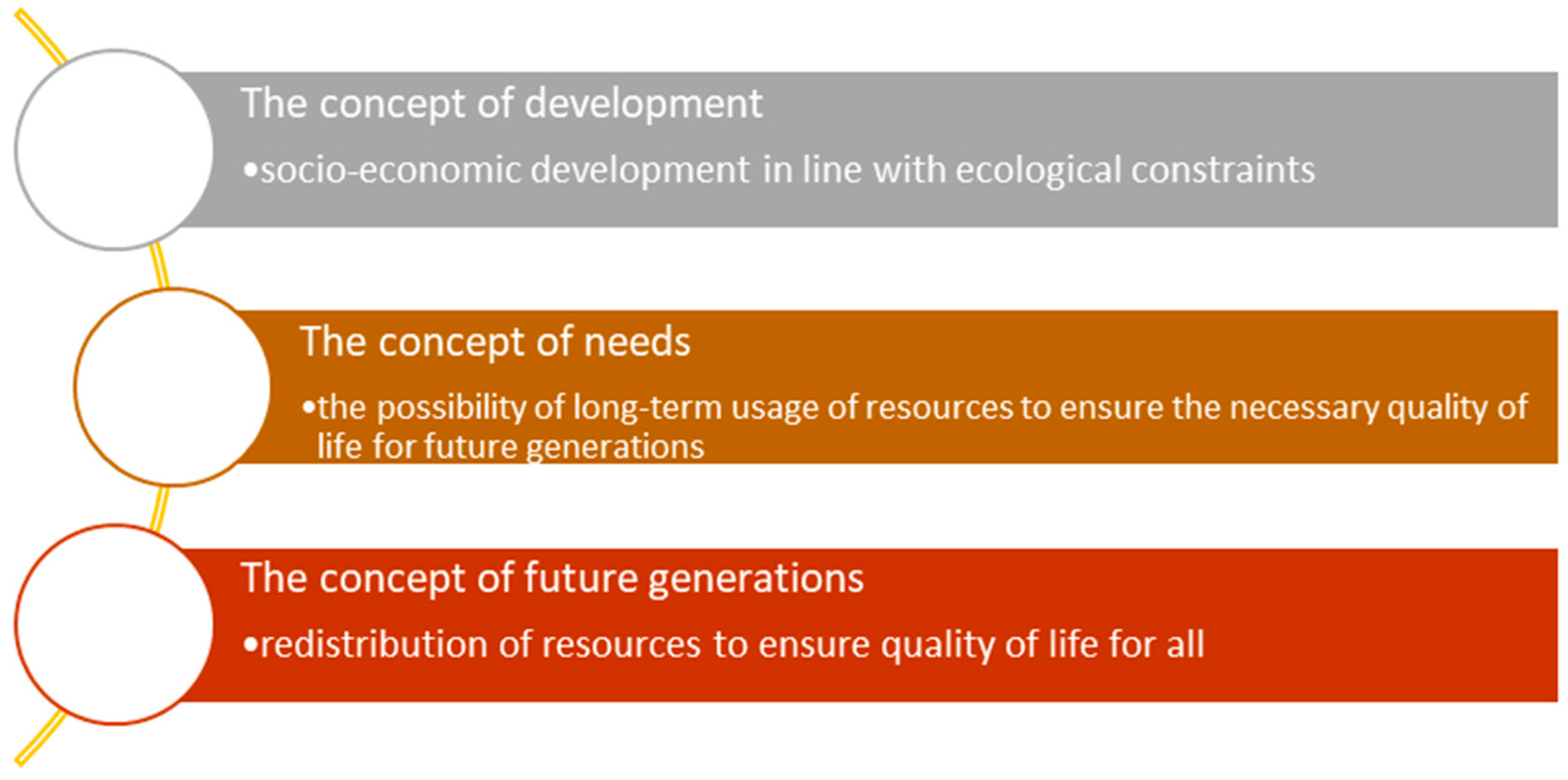


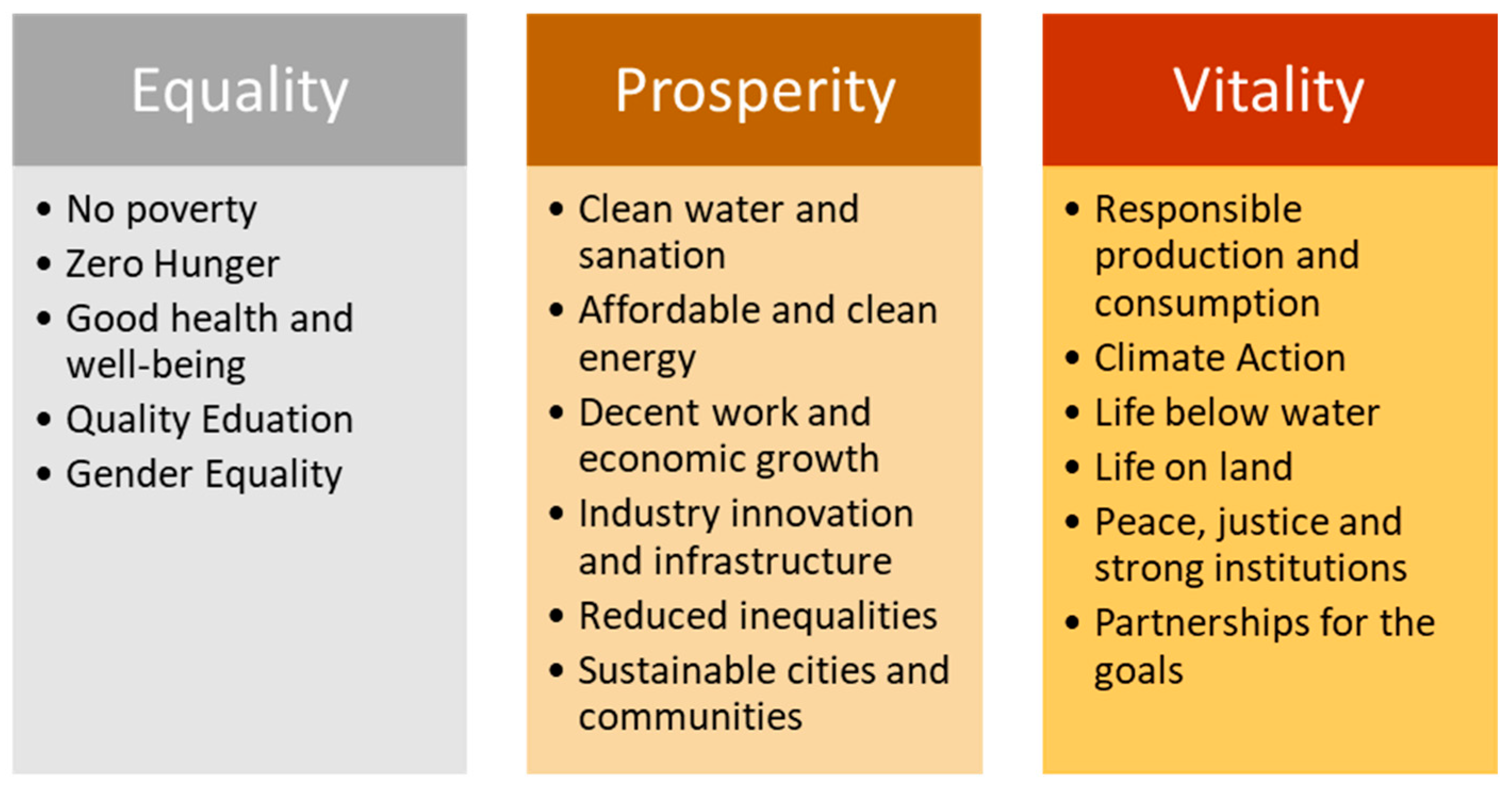
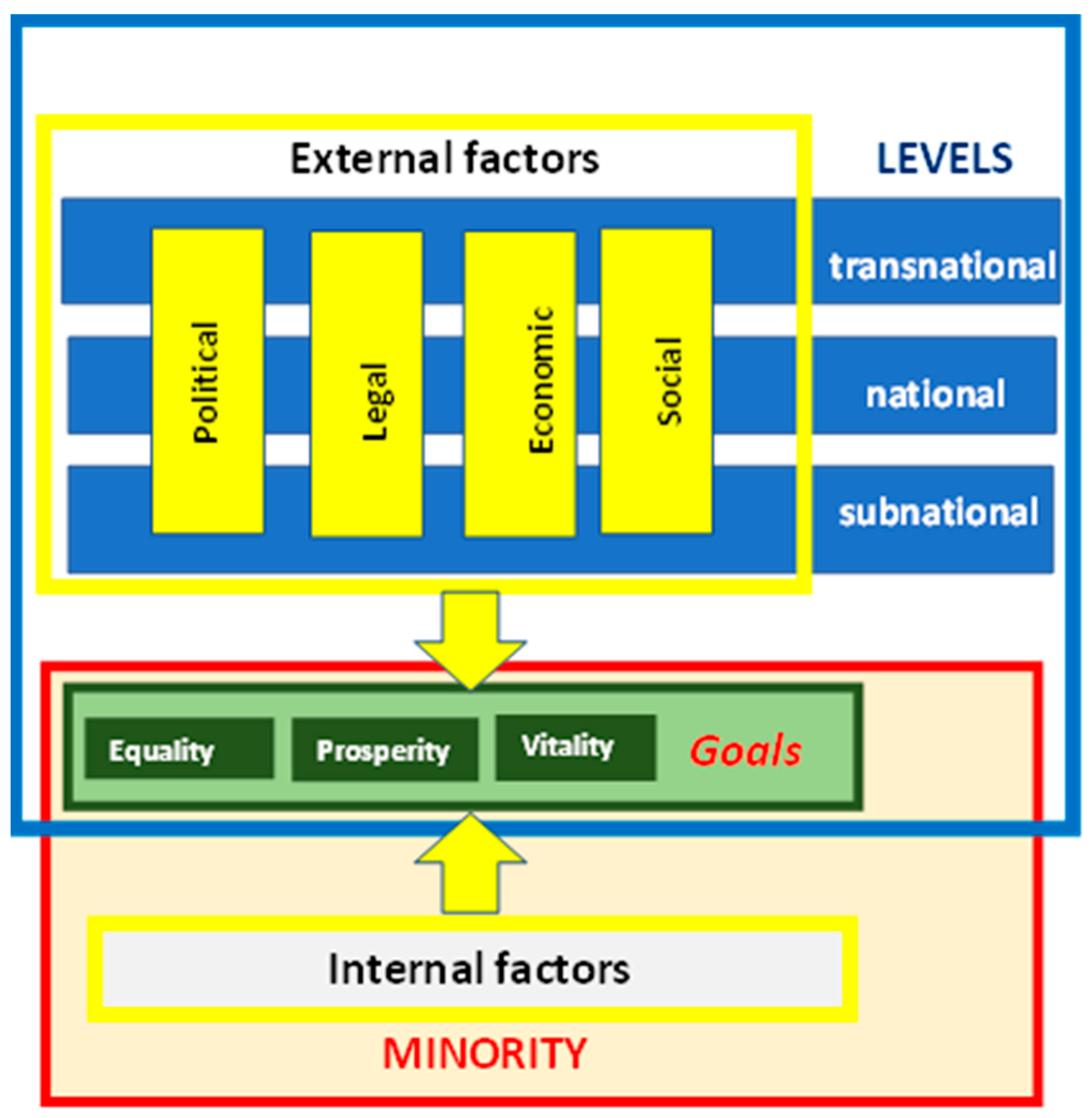
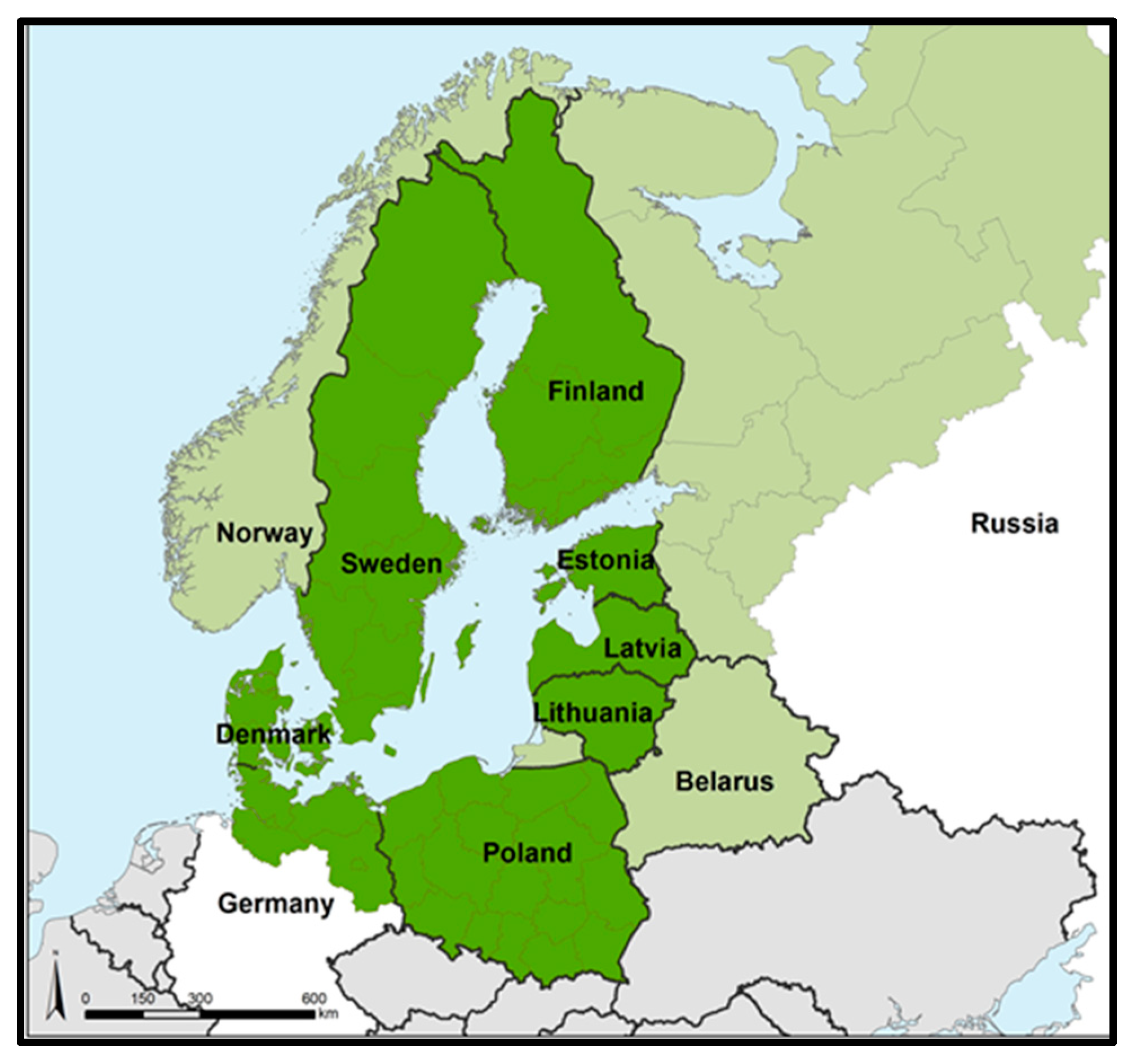
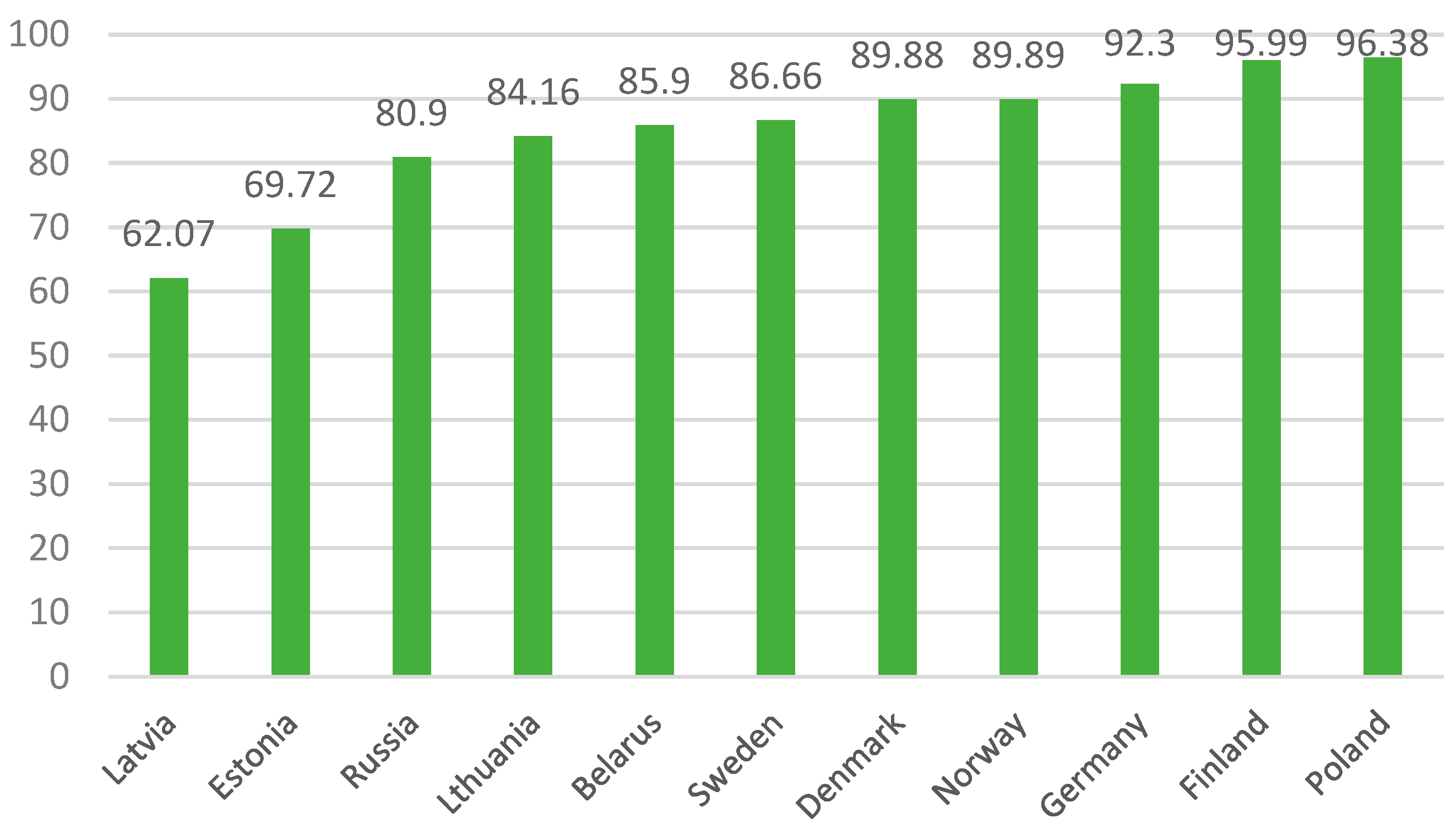

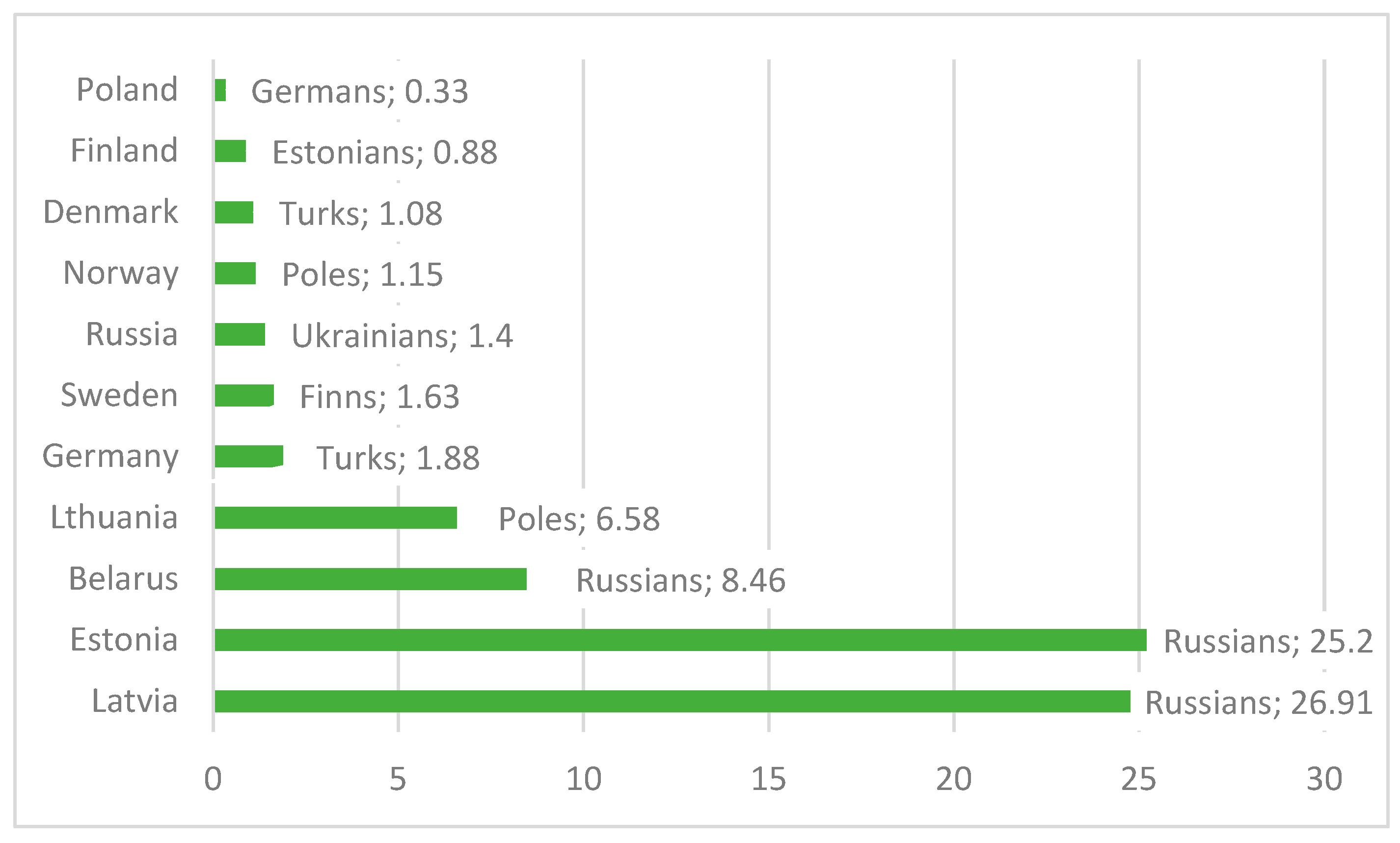
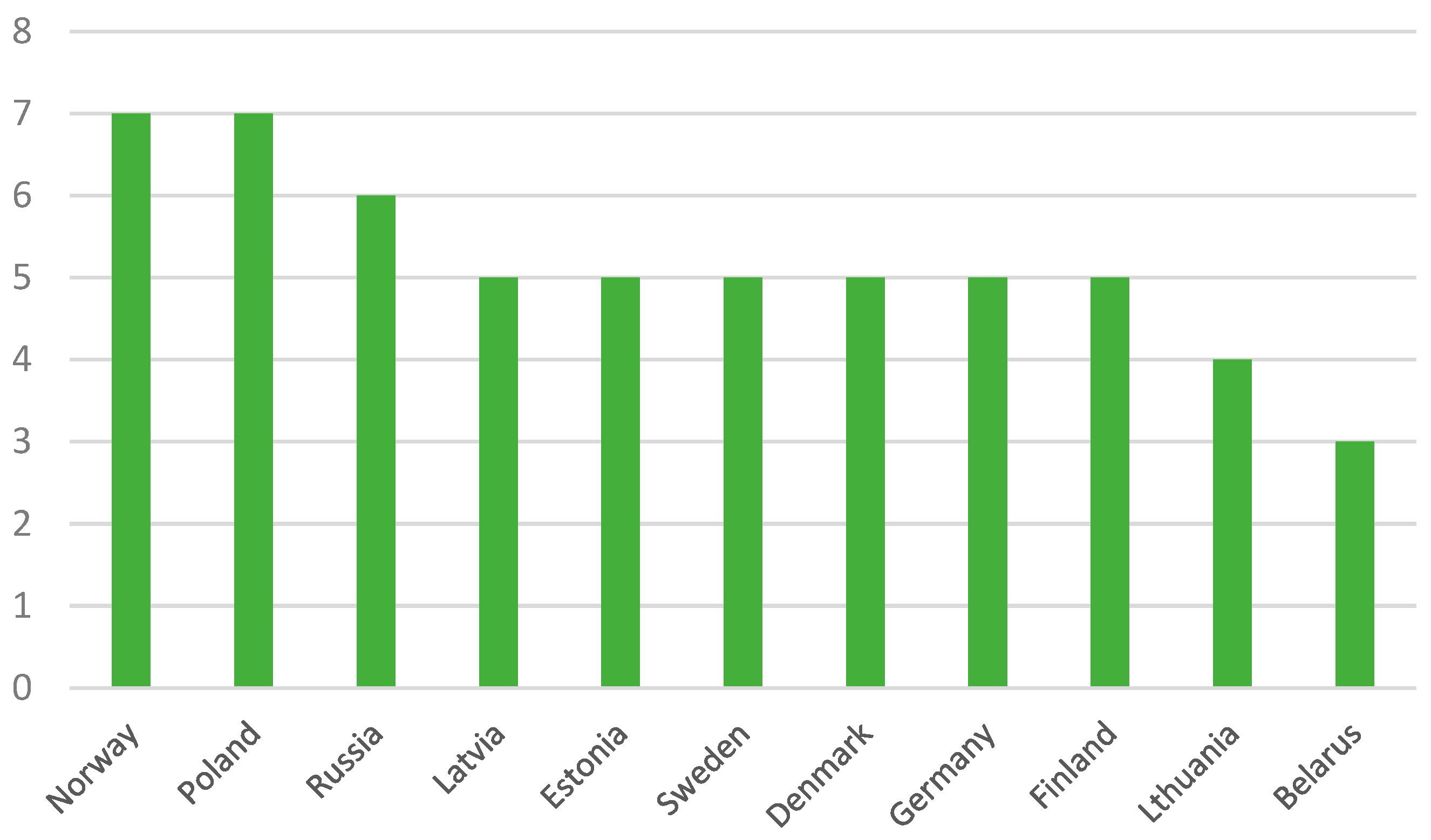
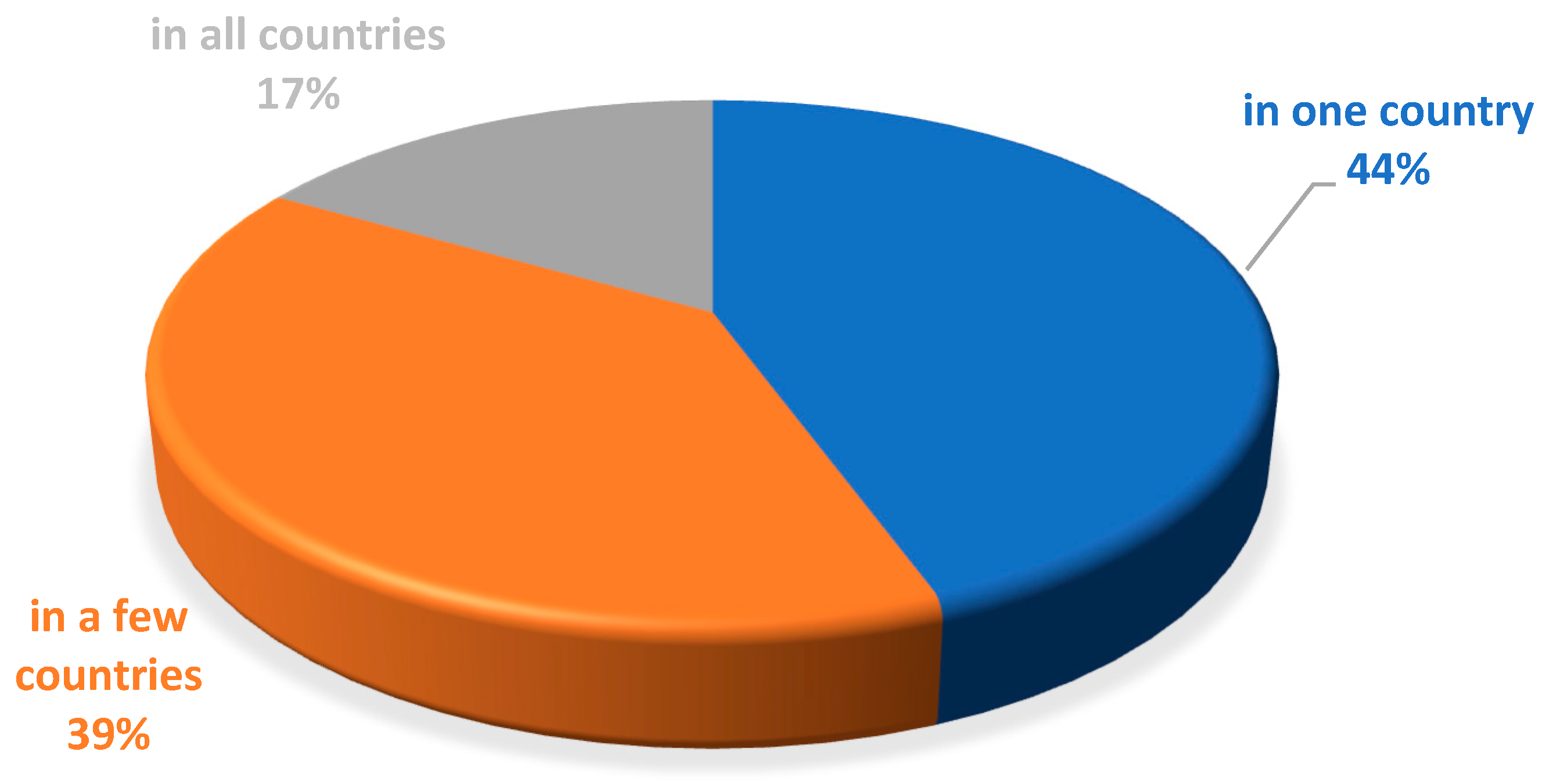
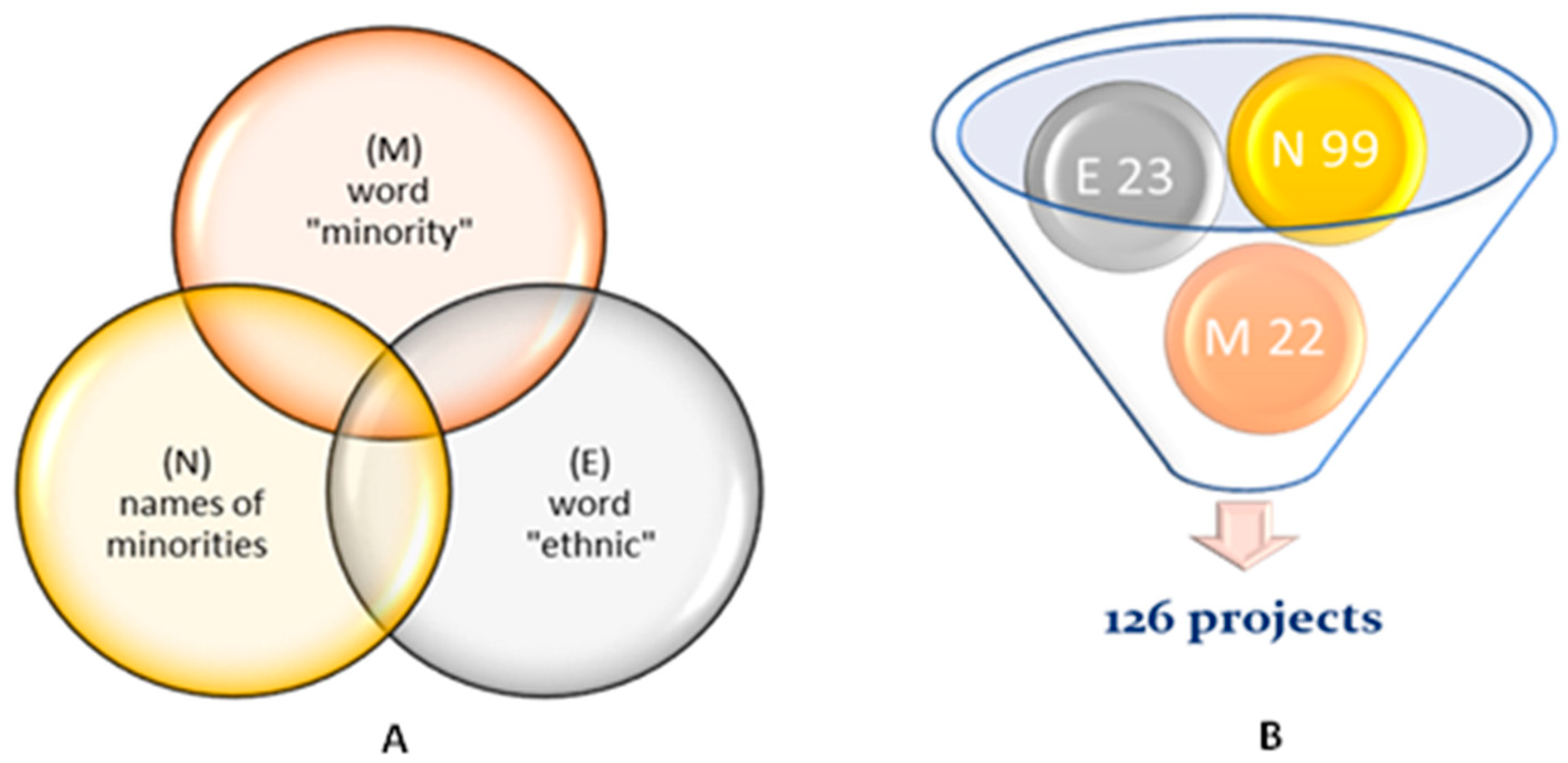






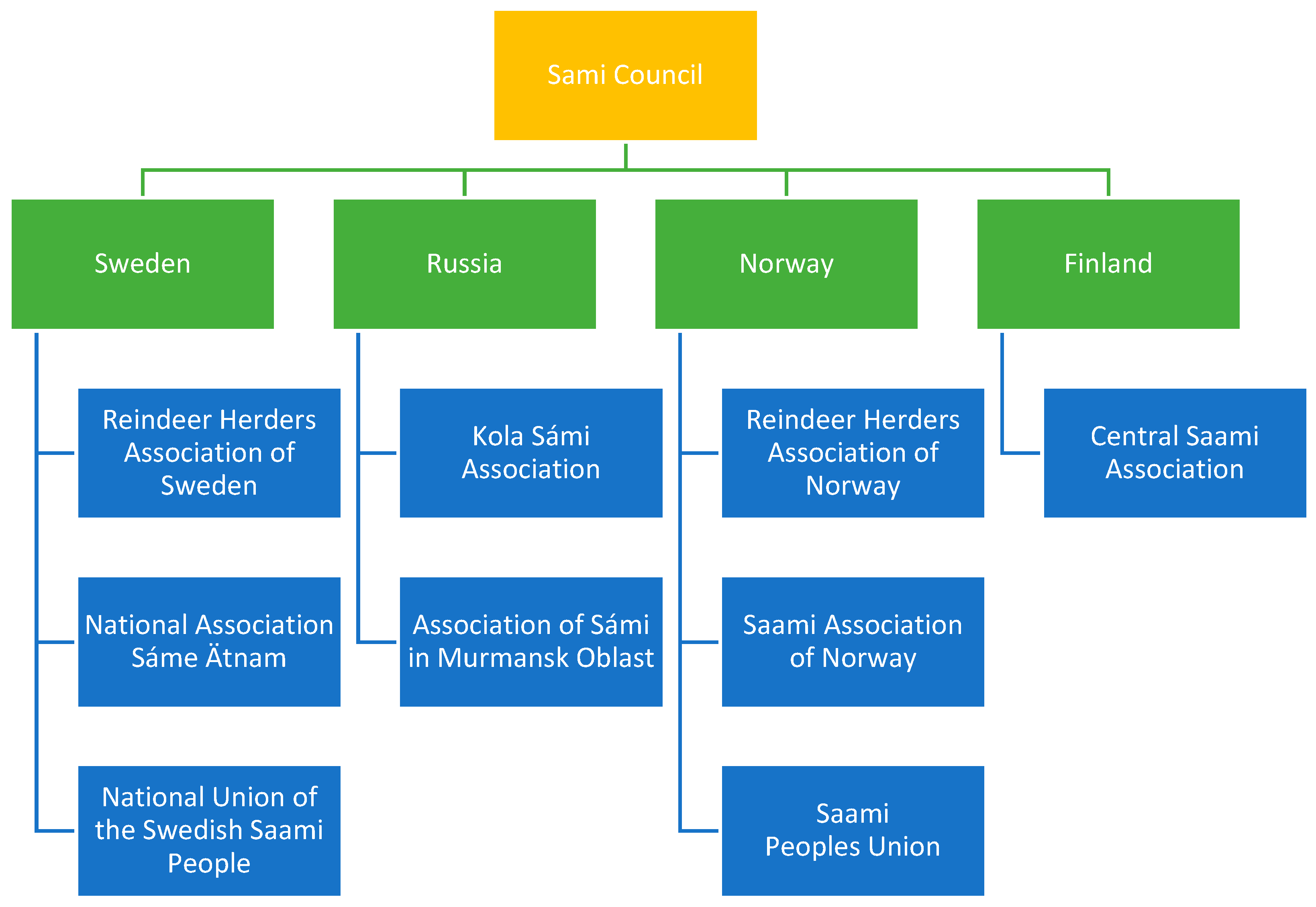
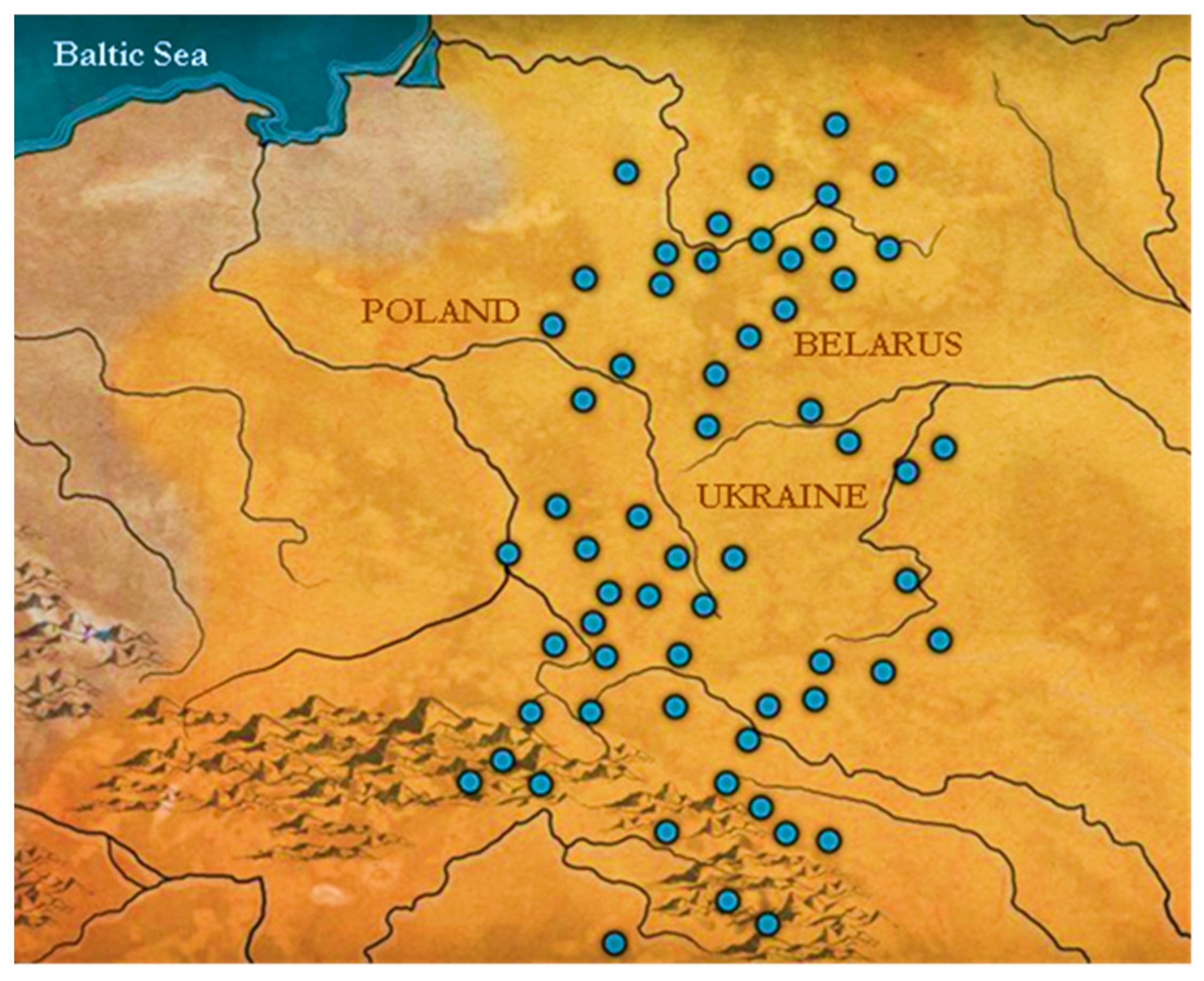
| No. | Minority Group | Genesis |
|---|---|---|
| 1. | “Aborigines”, “tribals” and other primary groups of archaic origin | Autochthons |
| 2. | Other ethnic groups and nationalities of very old origin | Autochthons |
| 3. | Invaders and conquerors | Newcomers |
| 4. | Settlers (settled by conquerors or by their own rulers or possessors) | Newcomers |
| 5. | Displaced persons | Newcomers |
| 6. | Refugees | Newcomers |
| 7. | Gastarbeiters | Newcomers |
| No. | Criterion | Germans | Foreigners |
|---|---|---|---|
| 1. | without migration background | “native” Germans | - |
| 2. | with migration background | born into a family which came to Germany after 1955 | holding foreign nationality |
| 3. | with migration experience | Germans who migrated themselves (e.g., Germans from the former Soviet Union) | born outside Germany |
| 4. | without migration experience | born in Germany | born in Germany |
| No | Criterion | National Minority | Ethnic Minority | Regional Language Minority |
|---|---|---|---|---|
| 1. | The group identifies with a nation that elsewhere has its own state. | + | ||
| 2. | The group does not identify with a nation that elsewhere has its own state. | + | ||
| 3. | The group strives to preserve its language, culture or tradition. | + | + | |
| 4. | The group differs significantly from other citizens in terms of language, culture or tradition. | + | + | |
| 5. | The group is aware of its own historical national or ethnic heritage and aims to express and protect it. | + | + | |
| 6. | The ancestors of the group lived in the present territory of the country for at least 100 years. | + | + | |
| 7. | The group is less numerous than the rest of the country’s population. | + | + | |
| 8. | The group uses a language other than the official language of that country; this includes neither dialects of the state’s official language nor the languages of migrants. | + |
| Minority Well-Being | |
|---|---|
| Direct Factors | Indirect Factors |
|
|
| No | States Nations | PL 2011 | DE 2011 | DK 2011 | SE 2010 | NO 2011 | FI 2014 | EE 2011 | LV 2011 | LT 2011 | RU 2010 | BY 2009 |
|---|---|---|---|---|---|---|---|---|---|---|---|---|
| 1. | Poles | X | 0.48 | 0.54 | 0.68 | 1.15 | 0.07 | 0.13 | 2.16 | 6.58 | 0.03 | 3.17 |
| 2. | Germans | 0.33 | x | 0.56 | 0.46 | 0.46 | 0.07 | 0.12 | 0.15 | 0.08 | 0.29 | nd |
| 3. | Danes | nd | 0.02 | x | 0.44 | 0.36 | nd | nd | nd | nd | Nd | nd |
| 4. | Swedes | nd | 0.02 | 0.27 | x | 0.66 | 0.15 | 0.03 | nd | nd | Nd | nd |
| 5. | Norwegians | nd | 0.00 | 0.29 | 0.42 | x | nd | nd | nd | nd | Nd | nd |
| 6. | Finns | nd | 0.01 | 0.07 | 1.63 | 0.12 | x | nd | nd | nd | 0.01 | nd |
| 7. | Estonians | nd | 0.01 | 0.02 | nd | nd | 0.88 | x | 0.10 | 0.01 | 0.01 | nd |
| 8. | Latvians | nd | 0.02 | 0.06 | nd | nd | nd | 0.13 | x | 0.07 | 0.01 | nd |
| 9. | Lithuanians | 0.02 | 0.03 | 0.12 | 0.07 | 0.31 | nd | 0.13 | 1.18 | x | 0.02 | 0.05 |
| 10. | Russians | 0.03 | 0.22 | 0.09 | 0.15 | 0.29 | 0.56 | 25.20 | 26.91 | 5.81 | X | 8.46 |
| 11. | Belarusians | 0.12 | 0.02 | 0.01 | nd | nd | nd | nd | 3.29 | 1.19 | 0.38 | x |
| 12. | Ukrainians | 0.13 | 0.14 | 0.12 | 0.05 | 0.04 | nd | 1.74 | 2.21 | 0.54 | 1.40 | 1.71 |
| 13. | Former Yugoslavians | nd | 0.75 | 0.87 | 1.22 | 0.60 | 0.06 | nd | nd | nd | Nd | nd |
| 14. | Jews | 0.02 | 0.11 | nd | nd | nd | nd | 0.15 | 0.31 | 0.10 | 0.11 | 0.14 |
| 15. | Italians | 0.02 | 0.61 | 0.09 | 0.07 | nd | nd | nd | nd | nd | 0.00 | nd |
| 16. | Americans | 0.03 | nd | 0.14 | nd | nd | nd | nd | nd | nd | 0.00 | nd |
| 17. | British | 0.02 | nd | 0.24 | nd | 0.26 | nd | nd | nd | nd | 0.00 | nd |
| 18. | Iraqis | nd | 0.09 | 0.53 | 1.17 | 0.43 | 0.12 | nd | nd | nd | Nd | nd |
| 19. | Iranians | nd | 0.05 | 0.28 | 0.60 | 0.28 | nd | nd | nd | nd | 0.00 | nd |
| 20. | Armenians | 0.01 | 0.01 | 0.01 | nd | nd | nd | nd | nd | 0.04 | 0.00 | nd |
| 21. | Turks | nd | 1.88 | 1.08 | 0.41 | nd | nd | nd | nd | nd | 0.08 | nd |
| 22. | Other | 3.19 | 3.23 | 4.73 | 5.97 | 5.15 | 2.10 | 2.65 | 1.62 | 1.42 | 16.76 | 0.77 |
| Total | 3.92 | 7.70 | 10.12 | 13.34 | 10.11 | 4.01 | 30.28 | 37.93 | 15.84 | 19.10 | 14.30 |
| No. | Ethnic Group | Characteristics of Ethnic Group |
|---|---|---|
| 1. | Kashubians | Ethnic group of Slavic origin. Lives in the northern parts of Poland (Pomorskie and Zachodniopomorskie voivodeships). There are approximately 216,000 Kashubians living in Poland. They use the Kashubian language, which is a Slavic language. The Kashubian language is an official regional language in Poland. The vast majority of Kashubians are Roman Catholic. |
| 2. | Silesians | Ethnic group of Slavic origin. Lives in southern Poland (Śląskie, Opolskie, Dolnośląskie voivodeships) and the northern part of the Czech Republic and Slovakia. About 847,000 Silesians live in Poland. The Polish authorities do not recognize Silesians as a national or ethnic group. The Silesian language is recognised in Poland as a dialect of the Polish language. Silesians are Roman Catholic or Protestant (of which, mainly Lutheran). |
| 3. | Roma | Non-territorial nation or ethnic group of Indian origin whose members form a diaspora inhabiting most countries of the world, including all countries of the Baltic Sea Region. The Roma community constitutes about 10–12 million people. About 300–400,000 Roma live in BSR countries (most of whom live in Germany). The Roma language is the only Indo-Aryan indigenous language spoken in Europe. In many countries (e.g., Poland), the Roma are the most evenly territorially distributed of the national and ethnic minorities. |
| 4. | Lemkos | Ethnic group of Slavic origin, forming part of the Ruthenian nation. Originally lived in the Beskidy Mountains (the area of today’s Poland–Ukraine–Slovakia borderland). Resettlement campaigns resulted in them mainly inhabiting western Poland (Dolnośląskie Voivodeship). The Lemko community in Poland is about 10,000 people strong. The Lemko language is an East Slavic language and similar to Ukrainian. Lemkos are primarily Orthodox or Greek Catholic. |
| 5. | Karaims | Ethnic and religious group of around 2000 people of Turkish or Semitic origin. Karaims live in small communities in Lithuania (Vilnius area), Poland (Warsaw or Wrocław area), as well as Russia and Ukraine. Karaim is a Turkic language. The Karaim religion derives from Judaism. |
| 6. | Tatars | A group of peoples of Turkish origin. The community is about 6 million strong. Most Tatars (over 5 million) live in Russia, primarily in the Republic of Tatarstan. A Tatar minority is found in each BSR country and totals (excluding Russia) about 6000–8000 people. The Tatar language is a Turkic language. The Tatars mainly profess Islam. |
| 7. | Livonians | The ethnic group of Balto-Finnish origin has lived in Latvia, Courland (about 200 people) and Estonia (22 people). The Livonian language, related to Estonian, is a dying language belonging to the Finno-Ugric language group. Livonians are Lutheran. |
| 8. | Suiti | Ethnic group of Balto-Finnish origin that lives in Latvia (Courland, Alsunga commune). The community has about 300 people. The Suiti language is a Baltic language. The Suiti are Catholic. |
| 9. | Setos | Ethnic group of Balto-Finnish origin that lives on the border of Estonia (Setomaa) and Russia (Pskov Oblast). There are approximately 15,000 Setos in the world, most of them in Estonia. Seto is a Finno-Ugric language. The Setos are Orthodox. |
| 10. | Sami | Indigenous ethnic group of Georgian origin living in the Sápmi region (formerly known as Lapland), which today covers large parts of northern Norway, Sweden, Finland and Russia (Murmansk Oblast). The Sami community is of about 80,000 people (50,000 in Norway, 20,000 in Sweden, 8000 in Finland, 2000 in Russia). The languages spoken by the Sami belong to the Finno-Ugric group of languages. The Sami profess Christianity (Lutheranism, Orthodoxy) and the indigenous animistic religion. |
| 11. | Karelians | Ethnic group of Balto-Finnish origin that inhabited the historic region of Karelia that is today divided between Finland and Russia. The Karelian community numbers about 70,000 people, of whom over 60,000 live in Russia. The Karelian language is a Finno-Ugric language. The Karelians profess Christianity (Orthodoxy, Lutheranism) |
| 12. | Kvens | Ethnic group of Balto-Finnish origin that inhabited the historic region of Kvenland off the coast of the Gulf of Bothnia. The Kven community is of about 10–15,000 people and lives in northern Norway. The Kven language is a Finno-Ugric language. The Kvens profess Lutheranism. |
| 13. | Tornedalians | An ethnic group of Finnish origin that lives in northern Sweden, in the Torne region, which is divided between Sweden and Finland. The Tornedalian community has about 50–75 thousand. people. The Meänkieli language spoken by the Tornedalians is related to the Finnish language. The Tornedalians profess Lutheranism. |
| 14. | Faroese | Scandinavian nation inhabiting the Faroe Islands (58,000 people). About 20,000 people live in Denmark and 1500 in Norway. Faroese belongs to the Scandinavian group of Germanic languages. |
| 15. | Inuits | Indigenous ethnic group (also called Greenlanders) living in Greenland (56,000 people). About 10,000 people live in Denmark and 300 persons in Norway. The Greenlandic language belongs to the Eskimo-Aleutian family. Greenlanders profess Christianity (Lutheranism) and the indigenous animist religion. |
| 16. | Frisians | Indigenous ethnic minority of Germanic origin living in the provinces of Groningen and Friesland of the Netherlands, in the federal states of Lower Saxony and Schleswig-Holstein of Germany and in Denmark (South Jutland). The Frisian community has about 500,000 members, of which about 60,000 live in Germany. The Frisian language, which has many dialects, belongs to the West Germanic group. Most Frisians are Protestant (Lutheranism and Calvinism) |
| 17. | Sorbs | National–ethnic group of Slavic origin living in Germany (the federal states of Saxony and Brandenburg), and numbering around 60,000 people. Sorbs are Roman Catholic and Lutheran. The Sorbian languages (Lower Sorbian and Upper Sorbian) belong to the group of West Slavic languages. |
| 18. | Jews | Semitic nation living in Palestine in antiquity and using the Hebrew language at that time. The Jewish community numbers about 15 million people. About 170,000 people live in the Baltic Sea Region (apart from Russia, where the Jewish community numbers about 150,000). 118 000 Jews live in Germany. Hebrew, which belongs to the group of Canaanite Semitic languages, is spoken by a total of 9 million people. |
| No. | Programme | Numbe of Projects | Project Budget |
|---|---|---|---|
| 1. | Programme 2000-06 Baltic Sea Region | 2 | 4,227,722 |
| 2. | Programme 2000-06 Cadses | 1 | 1,850,000 |
| 3. | Programme 2000-06 Estonia–Latvia–Russia (EE-LV-RU) | 1 | 290,700 |
| 4. | Programme 2000-06 Euregio–Karelia (FI-RU) | 1 | 39,300 |
| 5. | Programme 2000-06 Interreg IIIC North | 1 | 1,014,766 |
| 6. | Programme 2000-06 Interreg IIIC West | 1 | 562,826 |
| 7. | Programme 2000-06 Kvarken–Mittskandia (FI-SE-NO) | 1 | 3,360,000 |
| 8. | Programme 2000-06 Lithuania–Poland–Russia (LT-PL-RU) | 3 | 1,486,453 |
| 9. | Programme 2000-06 Northern Periphery | 1 | 1,001,120 |
| 10. | Programme 2000-06 Sweden–Norway (SE-NO) | 6 | 785,927 |
| 11. | Programme 2000-06 URBACT I | 2 | 1,918,529 |
| 12. | Programme 2007-13 Central Baltic (FI-SE-EE-LA) | 2 | 1,707,239 |
| 13. | Programme 2007-13 Central Europe | 1 | 1,176,810 |
| 14. | Programme 2007-13 Czech Republic–Poland (CZ-PL) | 1 | 236,134 |
| 15. | Programme 2007-13 Estonia–Latvia (EE-LV) | 1 | 126,247 |
| 16. | Programme 2007-13 Interreg IVC | 1 | 1,695,884 |
| 17. | Programme 2007-13 Kolarctic ENPI CBC | 4 | 3,678,052 |
| 18. | Programme 2007-13 Latvia-Lithuania (LV-LT) | 1 | 179,994 |
| 19. | Programme 2007-13 Latvia-Lithuania-Belarus ENPI CBC | 1 | 296,785 |
| 20. | Programme 2007-13 Nord (SE-FI-NO) | 30 | 11,318,307 |
| 21. | Programme 2007-13 Northern Periphery | 1 | 1,312,955 |
| 22. | Programme 2007-13 Poland–Slovak Republic (PL-SK) | 3 | 1,380,989 |
| 23. | Programme 2007-13 Poland-Belarus-Ukraine ENPI CBC | 2 | 1,728,346 |
| 24. | Programme 2007-13 Sweden–Norway (SE-NO) | 1 | 12,222 |
| 25. | Programme 2007-13 Syddanmark-Schleswig-K.E.R.N. | 2 | 1,201,404 |
| 26. | Programme 2014-20 Estonia–Russia ENI CBC | 4 | 1,232,809 |
| 27. | Programme 2014-20 INTERREG V-A Czech Republic–Poland | 4 | 9,628,154 |
| 28. | Programme 2014-20 INTERREG V-A Estonia–Latvia | 2 | 2,093,119 |
| 29. | Programme 2014-20 INTERREG V-A Finland–Estonia–Latvia–Sweden (Central Baltic) | 4 | 2,772,060 |
| 30. | Programme 2014-20 INTERREG V-A Germany–Denmark | 1 | 109,555 |
| 31. | Programme 2014-20 INTERREG V-A Lithuania–Poland | 2 | 996,635 |
| 32. | Programme 2014-20 INTERREG V-A Poland–Denmark–Germany–Lithuania–Sweden (South Baltic) | 1 | 2,697,116 |
| 33. | Programme 2014-20 INTERREG V-A Sweden–Finland–Norway (Nord) | 26 | 14,424,929 |
| 34. | Programme 2014-20 INTERREG VB Northern Periphery and Arctic | 5 | 4,647,438 |
| 35. | Programme 2014-20 Karelia ENI CBC | 1 | 46,311 |
| 36. | Programme 2014-20 Kolarctic ENI CBC | 1 | 1,084,909 |
| 37. | Programme 2014-20 Latvia–Lithuania–Belarus ENI CBC | 1 | 2,777,778 |
| 38. | Programme 2014-20 Poland–Belarus–Ukraine ENI CBC | 3 | 149,250 |
| Together | 126 | 85,248,774 | |
| No | Minority | Category of Projects | Total | |||
|---|---|---|---|---|---|---|
| Heritage Preservation | Social Support | Education | Political Empowerment | |||
| 1. | Kashubians | 2 | 2 | |||
| 2. | Silesians | 5 | 5 | |||
| 3. | Roma | 1 | 3 | 4 | ||
| 4. | Lemkos | 2 | 2 | |||
| 5. | Tatars | 1 | 1 | |||
| 6. | Livonians | 1 | 1 | |||
| 7. | Suiti | 1 | 1 | 2 | ||
| 8. | Setos | 3 | 2 | 5 | ||
| 9. | Sami | 39 | 17 | 11 | 4 | 71 |
| 10. | Karelians | 2 | 2 | |||
| 11. | Tornedalians | 3 | 1 | 4 | ||
| 12. | Faroese | 1 | 1 | |||
| 13. | Jews | 5 | 5 | |||
Publisher’s Note: MDPI stays neutral with regard to jurisdictional claims in published maps and institutional affiliations. |
© 2022 by the authors. Licensee MDPI, Basel, Switzerland. This article is an open access article distributed under the terms and conditions of the Creative Commons Attribution (CC BY) license (https://creativecommons.org/licenses/by/4.0/).
Share and Cite
Studzieniecki, T.; Meyer, B. The Use of EU Territorial Cooperation Funds for the Sustainable Development of National and Ethnic Minorities in the Baltic Sea Region. Sustainability 2022, 14, 7729. https://doi.org/10.3390/su14137729
Studzieniecki T, Meyer B. The Use of EU Territorial Cooperation Funds for the Sustainable Development of National and Ethnic Minorities in the Baltic Sea Region. Sustainability. 2022; 14(13):7729. https://doi.org/10.3390/su14137729
Chicago/Turabian StyleStudzieniecki, Tomasz, and Beata Meyer. 2022. "The Use of EU Territorial Cooperation Funds for the Sustainable Development of National and Ethnic Minorities in the Baltic Sea Region" Sustainability 14, no. 13: 7729. https://doi.org/10.3390/su14137729
APA StyleStudzieniecki, T., & Meyer, B. (2022). The Use of EU Territorial Cooperation Funds for the Sustainable Development of National and Ethnic Minorities in the Baltic Sea Region. Sustainability, 14(13), 7729. https://doi.org/10.3390/su14137729







